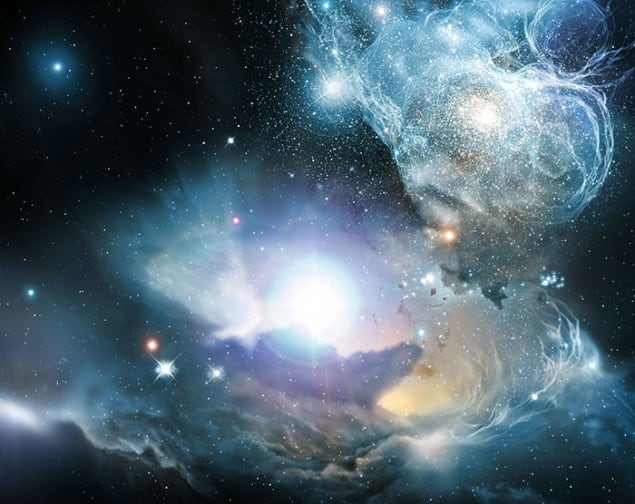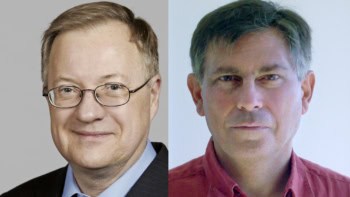
The dark ages of the universe were nearing their end 700 million years after the Big Bang, which is 150 million years later than previous measurements indicated. That is the conclusion according to astronomers who have analysed data from the European Space Agency’s Planck spacecraft. The research provides important information about when the first stars and galaxies formed in the early universe.
The first billion years of cosmic history are shrouded in mystery. This shroud began to lift when ultraviolet light from the first stars and galaxies ionized the fog of neutral hydrogen gas that filled the universe. This time period is known as the epoch of reionization and was more or less complete about 12.9 billion years ago, or about 900 million years after the Big Bang. However, exactly when reionization began has long been a source of debate amongst astronomers.
Polarizing effect
The answer lies in how photons in the cosmic microwave background (CMB) radiation are scattered by the electrons liberated from ionized hydrogen atoms. Electrons scatter the photons in preferential directions, causing the CMB to become polarized. Finding out when this polarization took place provides the answer to when the first stars and galaxies began ionizing the hydrogen in the universe.
“The polarization of the CMB is the best way to constrain reionization almost independently of other cosmological parameters,” explains Jean-Loup Puget of the Institut d’Astrophysique Spatiale in France, who is lead scientist of the High Frequency Instrument (HFI) on board Planck.
With that in mind, a team led by Matthieu Tristram of the Laboratoire de I’Accélérateur Linéaire, also in France, used the HFI to measure the point at which the reionization was half complete. To do this they used polarization data to determine the “Thomson optical depth”, which is a measure of how much scattering occurred at a given redshift (age of the universe). They found that the greatest amount of electron scatterings occurred about 700 million years after the Big Bang (13.1 billion years ago), which suggests that this was the time when reionization began in earnest.
Painstaking analysis
The data from HFI took several years because of the delicate nature of the instrument. HFI’s 52 bolometers measure infrared and millimetre-wave radiation by capturing heat and must be cooled to just 0.1 K to detect the faint CMB. “The result came after several years of painstaking data analysis, since it is very difficult to control spurious instrumental effects at such low brightness,” says Puget.
Earlier attempts to measure the epoch of reionization had given different results. NASA’s Wilkinson Microwave Anisotropy Probe (WMAP) had previously indicated that the reionization process was active just 450 million years after the Big Bang. Last year, Planck’s Low Frequency Instrument, operating at longer wavelengths than HFI, concluded that the reionization process began 550 million years after the Big Bang. Now, HFI has pushed the date even further forward.
The recent findings suggest that the first stars and galaxies received no help in their reionization efforts from quasars, which are active supermassive black holes. Surveys indicate that quasars were relatively few in number 700 million years after the Big Bang, whereas stars and galaxies were more plentiful.
The most distant galaxy ever seen is called GN-z11 and was identified by Hubble earlier this year. It existed 13.4 billion years ago, when the universe was just 400 million years old. Planck’s observations show that the universe was less than 10% ionized at this time, meaning that although stars and galaxies were forming it would take another 300 million years for them to be plentiful enough for reionization to be well underway. NASA’s upcoming James Webb Space Telescope, set to launch in 2018, will be capable of observing this time period as well as going even further back in time to chart the epoch of reionization in full.
The findings are described in Astronomy and Astrophysics.



